They taste great, run 8$/lb wholesale, yield multiple rounds of crops in the time regular garden plants give a single one, and, they're weeds. They're lamb's quarters, and if you appreciate good food, you should be familiar with them.
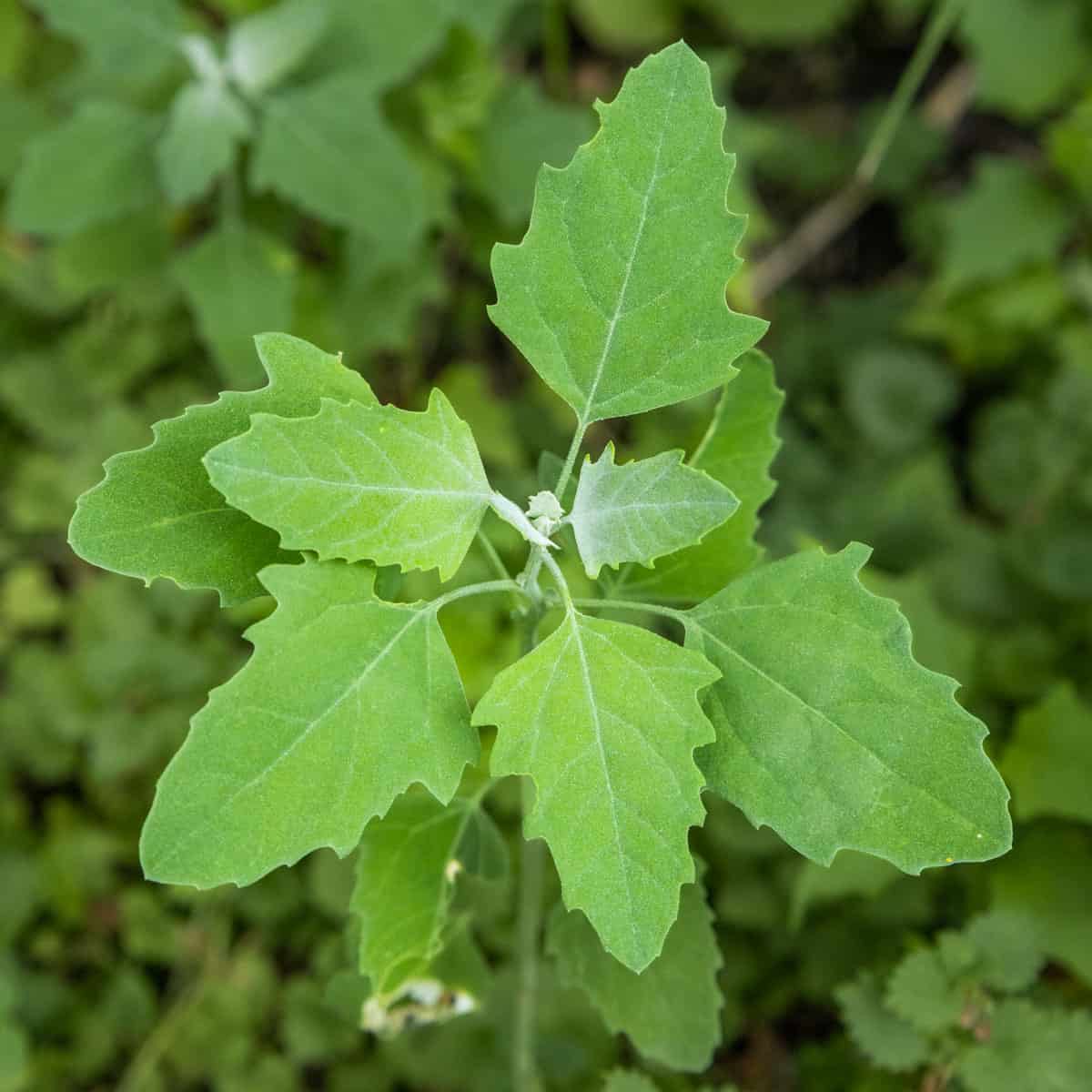
Along with nettles, these were one of the first wild green that I picked and ate. I'd already been picking mushrooms for years, here and there one of my chefs or someone I knew would mention lamb's quarters (and that you can eat them) in conversation. Wherever I went foraging though, I never saw them. I never understood why until I started spending time on my girlfriends farm where there's gardens, so many gardens, each of them overflowing with produce, different species of squash, beans, peas, herbs, lettuce, corn, tomatoes, but most importantly, weeds.
I wasn't doing anything wrong, I just didn't understand the terrain that the plants wanted. The species of Chenopodium plants that make up lamb's quarters and it's related cousin(s) amaranth aren't going to be in the woods where you'll look for mushrooms, they crave nitrogen and areas that have been disturbed or dug-up. Disturbed soil gives them and other plants a chance to get a foot hold in the newly exposed earth and access to the nutrients they crave. You'd better believe they're serious too, seeing how fast and how thick they grow is remarkable.
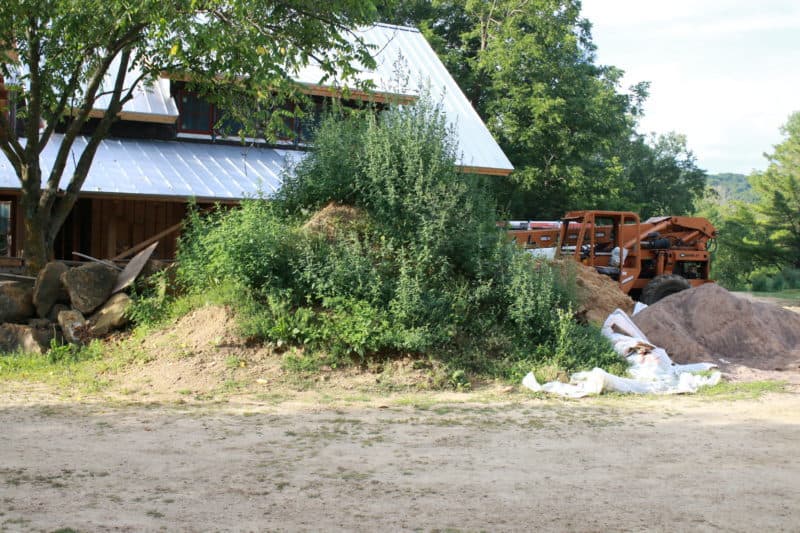
As far as they growth goes, they're aggressive, but not so aggressive that they're going to completely overwhelm you or other plants you want to grow as long as you keep an eye on them and pull some here and there. For an example of aggressive plants, see Galinsoga or Japanese Knotweed, I wouldn't want to have those near anything I value in the garden.
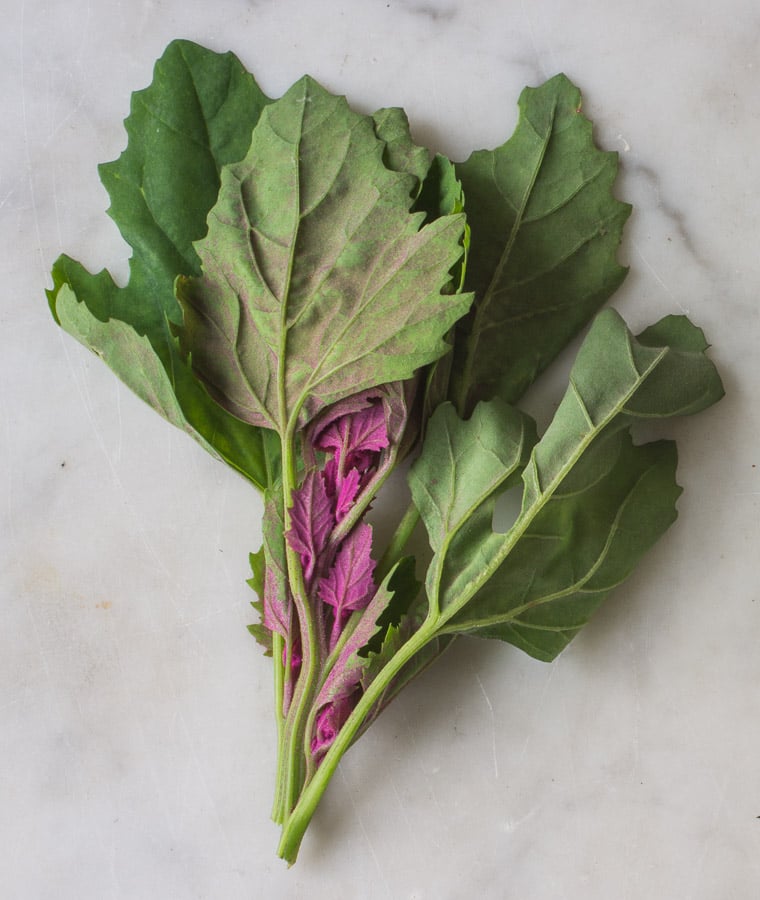
My girlfriend's mother, a long time wild-crafter, encouraged me to harvest wild plants and introduced me to her favorite species of lamb's quarters she'd been harvesting for years: magenta spreen, likely Chenopodium giganteum. Since she showed them to me they've become my favorite species too. Unless it's gone feral or you know someone whose planted them, the species of them you're likely to see, from my experience will be the more common version of Chenopodium album, or another all-green species, see both below.
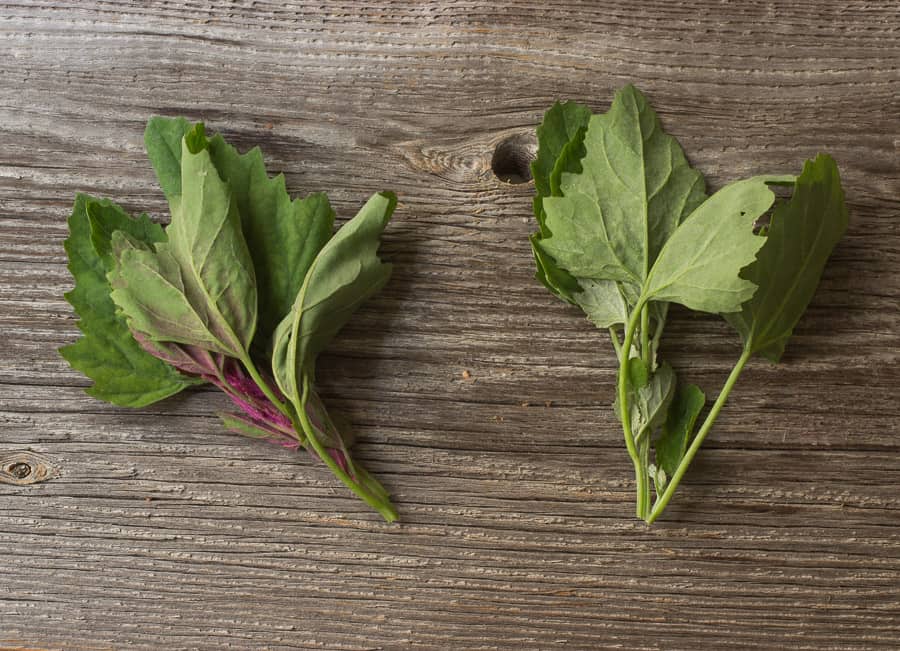
The only difference really between the two is their color, magenta spreen, as it's name implies, has a purple flush in it's center. Common lamb's quarter usually has a white flush of color. All of them will have a sort of mealy, powdery fluff on the leaves, which isn't unpleasant to eat, on the contrary, I think that it helps the leaves shed water, and helps them to dry quickly after washing.
Before I get into the cooking and handling of one of the most versatile greens you can forage, here's a few broad points about them since if I keep typing you'll be here all day.
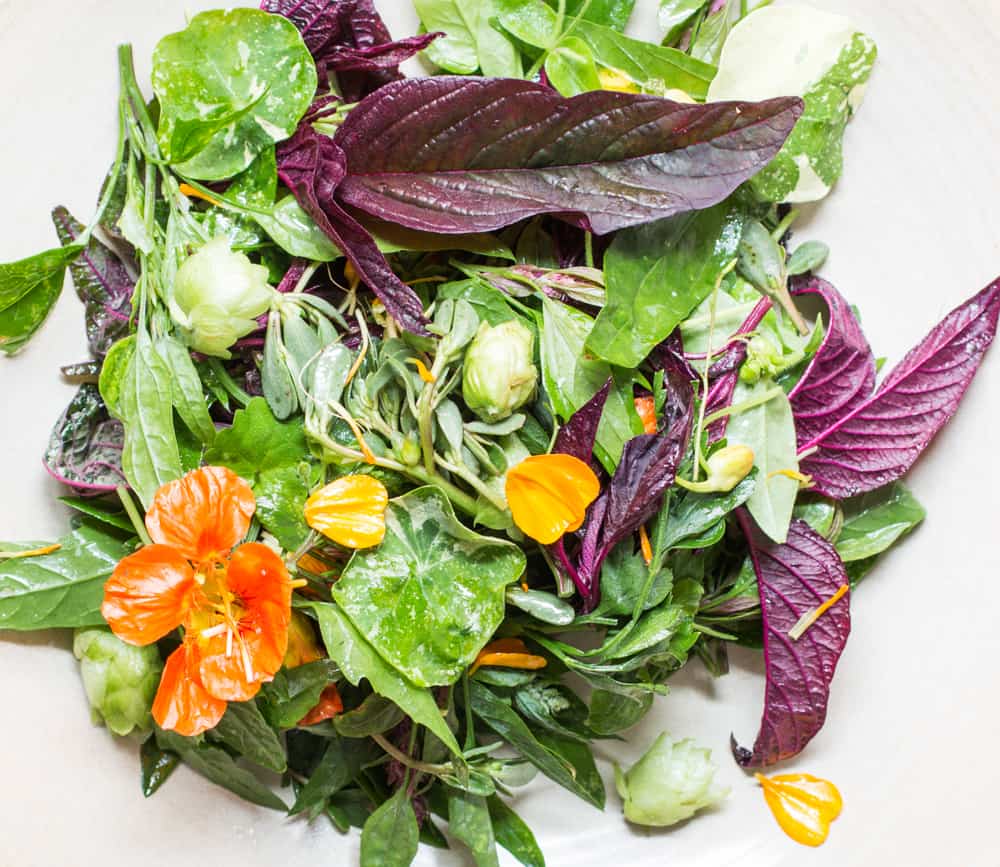
Lamb's quarters:
- Have been eaten for a very, very long time in Central America, and around the world, but Mexico is where I've found the best records (and recipes!) of their use as food, where they're referred to under the umbrella name of "quelitas", a term of endearment for small, wild greens that are good to eat. Similarly, Greeks bundle wild greens under the name of "horta".
- Can be eaten raw or cooked.
- Will continuously produce for you if you have a patch throughout the growing season. I've supplied a 120 seat restaurant with fresh lamb's quarters for an entire growing season without purchasing them from using only a 10' x10' compost pile. Most of the time they were used raw, but yes, you can feed an army with this plant, do not worry about over-harvesting.
- Concentrate nitrates from the soil. If you have animals, (or fertilize your garden with manure?) keep lamb's quarter out of the pasture, since they absorbs nitrate from feces and concentrate them, which can cause nitrate poisoning. I've never heard of a human getting nitrate poisoning from eating lamb's quarters, but who knows.
- Are technically a bunch of different species of plants in the genus Chenopodium. There are many, many types of lamb's quarters.
- Will produce seeds that can be used as a grain or flour at the end of the growing season. Like amaranth, you can harvest them, but it's a pain in the ass, I don't bother.
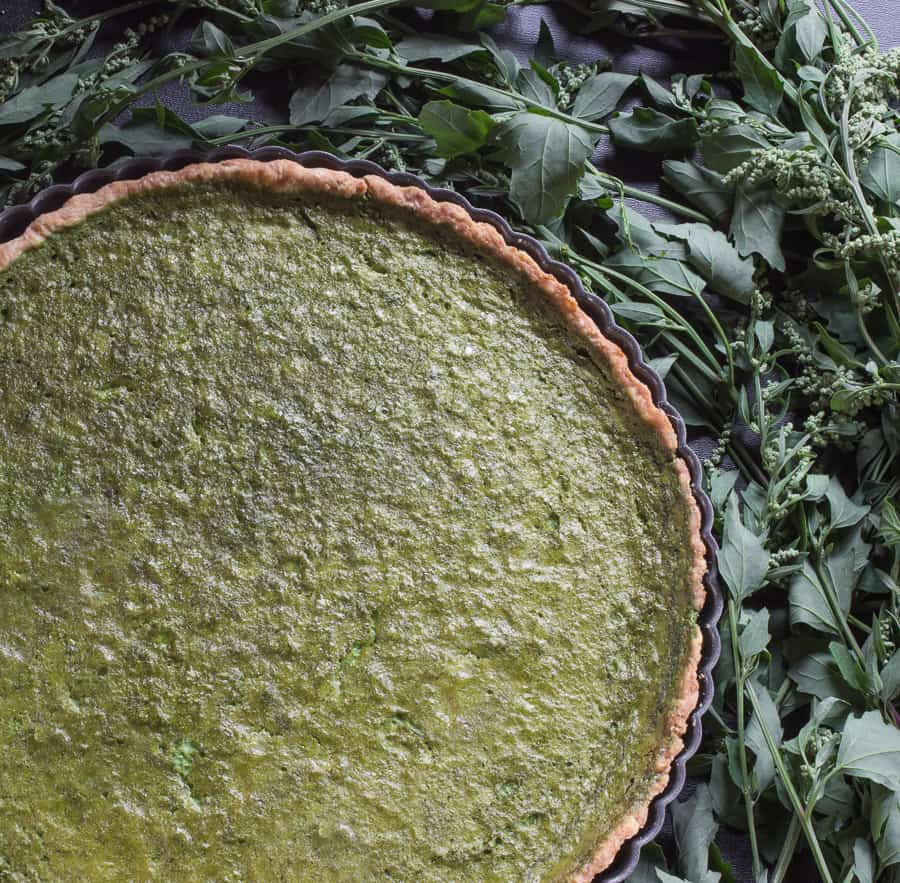
Harvesting and storing
Lamb's quarters are hardy and will withstand all sorts of abuse, a lot different than a delicate green like chickweed or a flower. As far as harvesting goes, the most important thing is to make sure you are picking young plants, they should not have formed seed heads yet. When I'm going to harvest, I get a scissors, a paper grocery bag, (or plastic if it's very early in the morning and the dew will tear the paper) and cut the young clusters of greens off of the plant.
When I get to the kitchen, I like to fill a sink with cool water, then pick them into bite size clusters and refresh them in the water and swish them around for a few minutes to clean them and crisp them up, if they've wilted from the sun's heat or car travel, they will be revived after a dip in the water, just like they're freshly, or even more sturdy. Afterwords, I roll them in a towel or spin them dry, then refrigerate in a plastic bag with a damp cloth. You can refrigerate in a paper bag too, but they'll dry out faster.
Long term storage
If you want to store them in the freezer, cook them in salted water until they're *just* wilted, about 4-5 seconds, shock in an ice bath, squeeze out the liquid, put into labeled, dated resealable bags and freeze. I haven't bothered drying them.
"Cultivating" utilizing a compost pile, or disturbed earth.
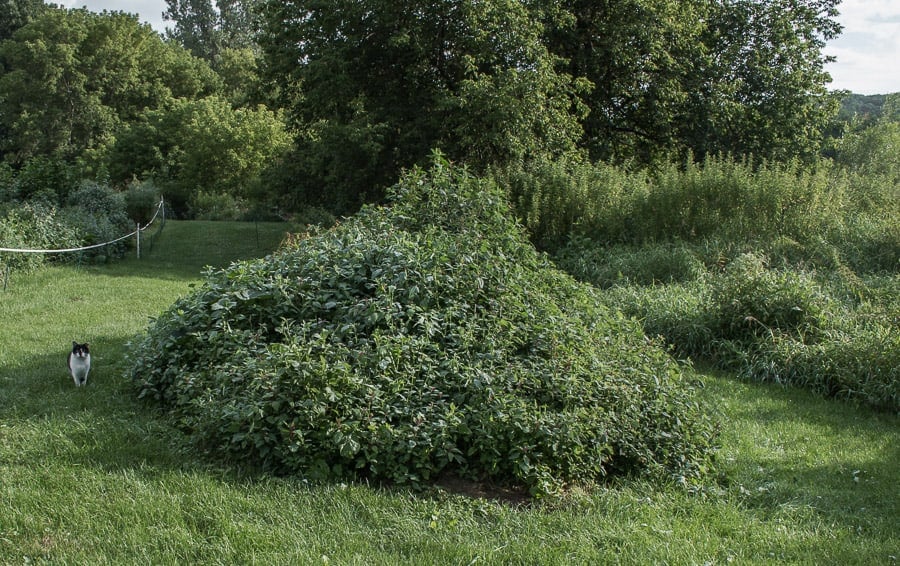
The above picture is how I supply an entire restaurant with lamb's quarters without having to pay for it, and it's a secret you can use with a lot of other greens, like amaranth and nettles. Like I mentioned, these and other plants really like disturbed soil and crave nitrogen. By creating a habitat they'll enjoy, you can harvest impressive amounts of them. Generally I got 1-2 harvests a week off of the compost and construction piles shown earlier in this post. Did I mention they can sell for 8$ /lb? 🙂
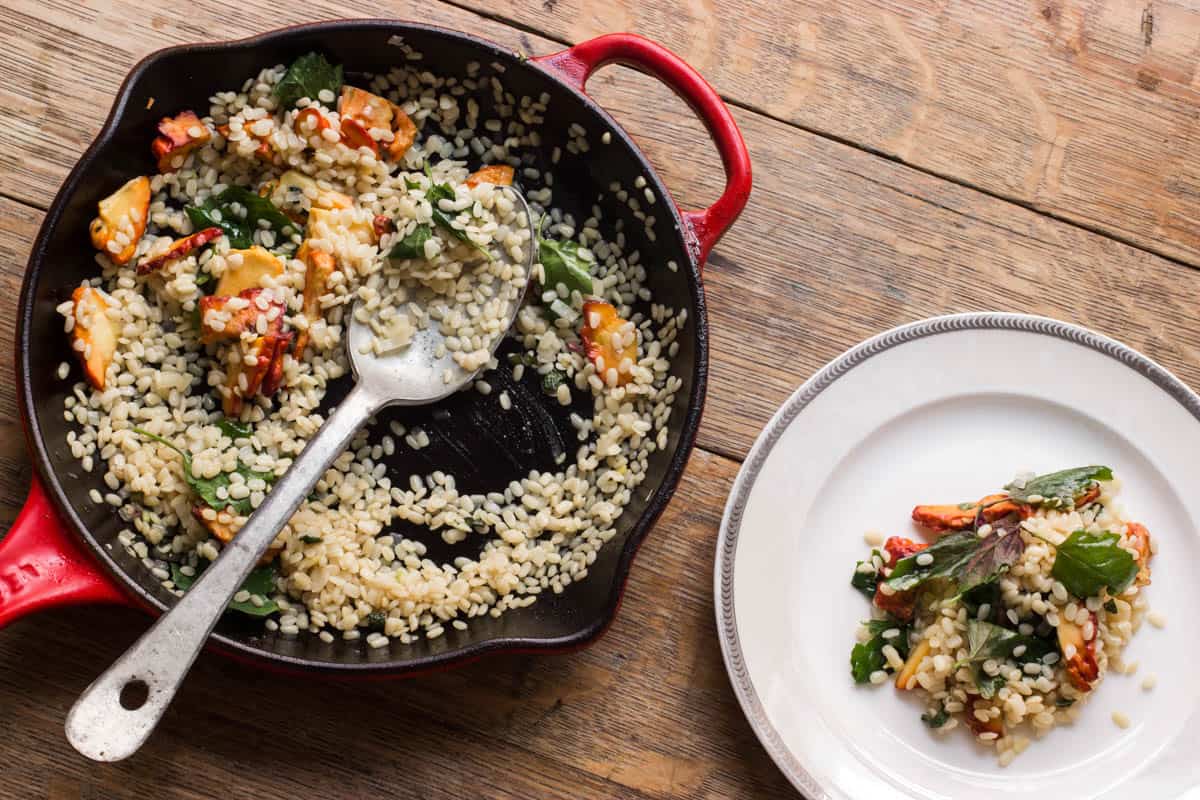
Cooking
The fun part. Online, you might see pictures of people cooking just the leaves of lamb's quarters. Not only is only cooking with the leaves making more work for yourself by having to pick the leaves off, but it's unnecessary, and wasteful in my opinion. As long as you're cooking with the tender young growth, you can just give them a chop, wilt the stems and leaves all together, or cook whole clusters like a small vegetable and they'll be great.
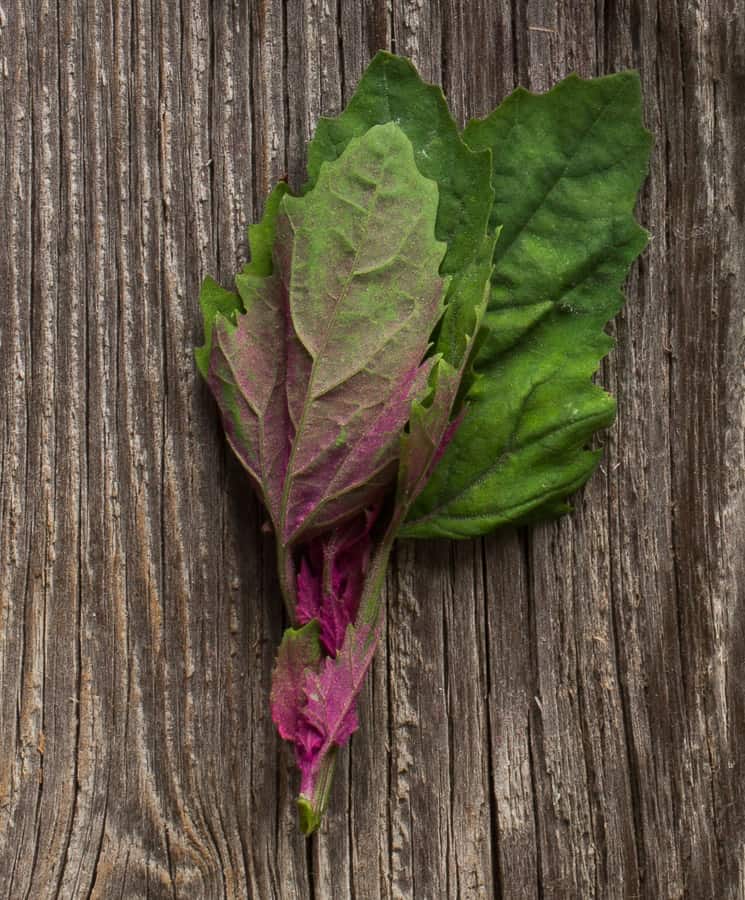
Use whole clusters of young growth
To get the most out of my lamb's quarters and to show off their shape, I generally use whole clusters of young growth. The clusters can be added to a blend of different greens where they add texture to salads, or wilted quickly, as if they were a tiny vegetable. Using them this way you get to not only eat the leaves, but the roughage and fiber of the stems, which is a lot more delicious than it sounds.
Should I boil them?
To me this is a waste of nutrients. If I want to cook them, I just wilt them in a small amount of fat or liquid in a pan with a lid on it.
The power of wilting
Yes you can serve these raw in a salad, and they're great. But, for nutrition, and since I love eating wilted greens, consider what happens when you wilt them: they shrink down to a tiny fraction of their original size. By wilting greens, you can physically eat many, many more than if you were to eat them raw in one sitting as they're easier to chew, and to digest. There is power in these greens, a part of our ancestral diet that we need to reclaim the more you eat, the better.

Beka
Hello! Do you have any uses for this plant if it has already started seeding? Sadly, mine got old before I got to it.
Alan Bergo
As a leafy green, no. Not unless you’re growing the huazontle variety, which is grown specifically for the big flower heads. What you can do is cut the plants down so they’ll start to make new tender growth.
Bird Hugger
I've heard that the seeds are great fried in a pan and added to soups, breads and more. I do believe people dry them like stinging nettle seeds and put them in power balls and trail mixes.
David
Hey, Alan!
Great article. I'm dehydrating a batch right now to get a start on a green powder jar for the cold months. I loved your lambsquarter video and plan to attempt that soon, too. What are your thoughts on pickling the stems? How would you approach that? From a chef's perspective, what else would you do with this potential resource?
Alan Bergo
Hi David. Purslane stems I would pickle. Lamb's quarters I don't really see the appeal personally. The other thing to do is to blanch or steam and freeze some for when the greens are scarce. They can be pureed into soup, used for fillings, just warmed up and eaten, etc.
Renee West
Just spread a load of topsoil around and thousands of lambs quarter coming up everywhere on the still bare soil. Of all the noxious weeds that could've been in the soil, I get lambs quarter. I'm fairly pleased.
Alan Bergo
Hey Renee, I see that all the time! I've supplied an entire restaurant off a 10'x10' pile of compost.
Kristina Jager
my small yard in St Paul is absolutely full of these, though most have gone to seed about now, there's still a few young plants popping up. Thanks for the ideas on how to use them.
Alan Bergo
Thanks Kristina
Kaelyn
Hello! Do you have the tart recipe?? Thanks!
Alan Bergo
Kaelyn, use this recipe. My old boss liked it so much here put it in his cookbook after I made it one day for restaurant service. Lambsquarters Tart
judi milton
OMG! I have a 1000 yr. supply. Been eyeing them for a few years with something niggling at my memory about being useful in some way. Here goes! --Judi
Ansh
Hi Judi
What part of MN are you in? I would love to get a small portion of your mega supply!
Eli
I have some with flowers on and just cooked them. They seem a little bitter but seem good. I boiled them till tender in water with vinegar. Im wondering now should i eat them at all.
Alan Bergo
Lamb's quarter does not make flowers, and is not bitter in the slightest, so I would be sure of your identification. I would not boil with vinegar, either, better to cook in lightly salted water until tender or they taste good to you, and douse them with a little vinegar afterwords.
Saskia Boer
They do flower, but it's an undistinctive green flower.
Rebecca
On one of my little adventures, I rented an old farmhouse in the westernmost end of MN. I was lucky to have these growing right around the house because there was not much green produce showing up in the local small-town grocer. Sometimes I combined them with tiny milkweed shoots (which were going to be mowed down again by the owner of that property--otherwise, I would have left them for the butterflies). Perhaps I'll find some lamb's quarters again while camping, which is a great way to get some fresh greens without commanding cooler space.
Alan Bergo
They're a great, all-purpose green.
Steve
What about oxalic acid in lamb’s quarters? I get kidney stones easily.
Alan Bergo
Treat like spinach. If you blanch it that shouldn't be an issue.
Gabriela
Great information! I love eating lamb's quarters and I have some that have gone to seed, so I was wondering if they were still edible.I found my answer in your article.Thanks for sharing!
Alan Bergo
Glad you found what you were looking for Gabriela. If you continually cut lambsquarters down, or better yet, mow them, you can extend the harvest throughout the summer. The amount of food you can produce with a lawn mower that way is ridiculous.